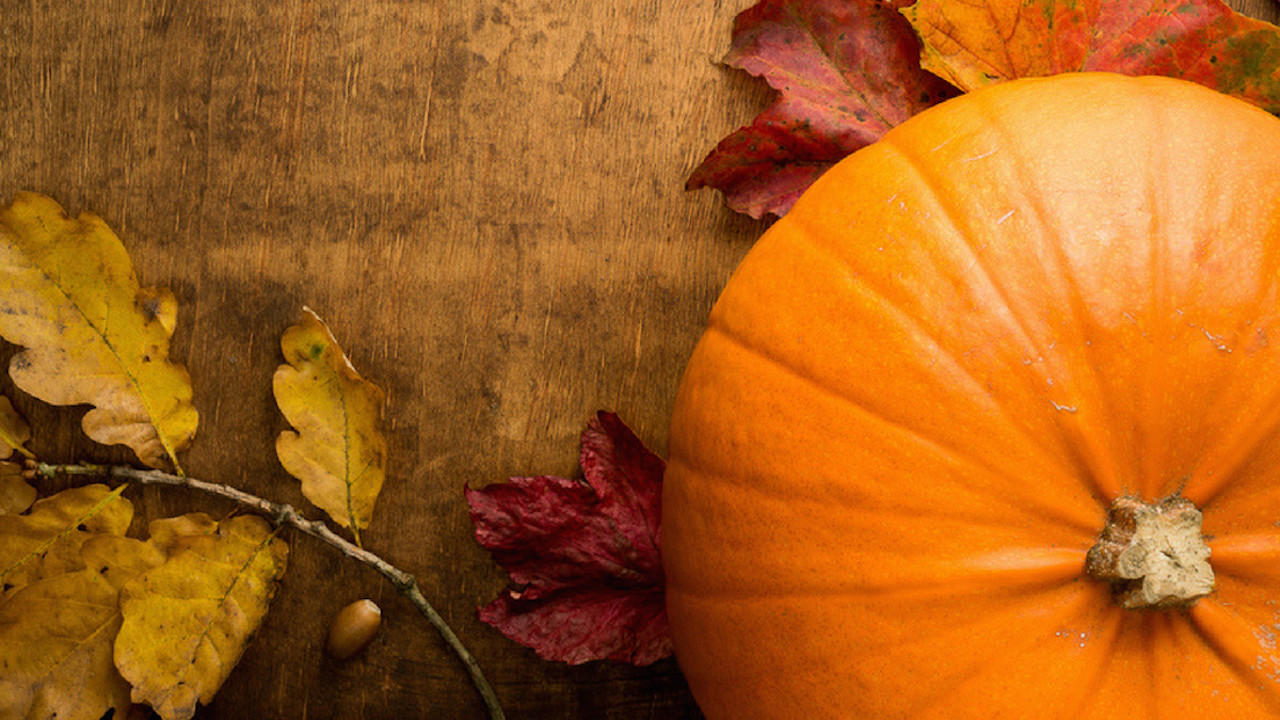Pumpkin | easy-to-digest nutrition all year long

The first lick of cool air in North America brings pumpkins to mind. Their orange hue is synonymous with fall and their rind simply begs to be carved. Yet, please consider that pumpkins are much more than obligatory autumn porch decoration or filling for a Thanksgiving or Christmas pie. Did you know they’re one of the most nutritious foods on the planet?
7 healthy reasons to enjoy pumpkin
1. Pumpkin is easy-to-digest.
The flesh of a pumpkin, which is used to make pies and soups that are healing, soothing and easy-to-digest, is perfect when you're recovering from Inflammatory Bowel (IB) symptoms. It is so gentle on the digestive system that it is one of the first foods introduced to babies. Pumpkin purée is a perfect way to thicken sauces without adding glutenous flour.
2. Pumpkin is good for heart health.
One (1) cup of cooked pumpkin contains 146% of your daily recommended intake of beta-carotene, which protects cholesterol from oxidation, thus assisting in the prevention of Heart Disease. Beta-carotene (aka pro-vitamin A) is a powerful antioxidant and anti-inflammatory nutrient.1
3. Pumpkin contains a natural colouring agent.
Cut out synthetic food colouring agents and opt for zeaxanthin, which is what creates the yellow/orange pigment of the pumpkin. Zeaxanthin is a carotenoid that is often used as a natural alternative to man-made food colouring. Keep in mind to always try and avoid products that list ingredients containing a colour and a number.2
4. Pumpkin is a great source of dietary fibre.
Adding more fibre to your diet can aid in proper elimination, guard against Heart Disease and decrease levels of bad cholesterol (LDL).3
5. Pumpkin is high in antioxidants.
Dark green and orange pigments show high levels of chlorophyll and carotenoids, which contain antioxidants. Loading up on antioxidants over the wintertime will help build up your immune system and fend off pesky pathogens.4
6. Pumpkin is a great source of potassium.
Recent studies have shown that increasing dietary potassium will actually block your body’s excretion of calcium, allowing for less bone loss and lower rates of osteoporosis.5
7. You can buy pumpkin locally!
While 'pumpkins' are native to North America, winter squash is grown throughout the world and can often be purchased at farmer's markets. Collecting pumpkin seeds to eat and plant is an easy & fun activity (especially for kids).
References
- Richard Hunt, Richard Fedorak, Christine McLennan and Alain Pavilanis: “Therapeutic Role of Dietary Fibre.” Canadian Family Physician Vol 39. April 1993
- Jung Sook Seo, Betty Jane Burri, Zhejiu Quan, Terry R. Neidlinger: “Extraction and chromatography of carotenoids from pumpkin.” Journal of Chromatography A. Volume 1073, Issues 1–2, 6 May 2005, Pages 371–375
- Ali Aberoumand: “A Review Article on Edible Pigments Properties and Sources as Natural Biocolorants in Foodstuff and Food Industry.” World Journal of Dairy & Food Sciences 6 (1): 71-78, 2011 ISSN 1817-308X. IDOSI Publications, 2011
- G E Bartley and P A Scolnik: “Plant carotenoids: pigments for photoprotection, visual attraction, and human health.” Plant Cell. 1995 Jul; 7(7): 1027–1038. doi: 10.1105/tpc.7.7.1027 PMCID: PMC160905
- Jeri W Nieves: “Osteoporosis: the role of micronutrients.” Am J Clin Nutr May 2005 vol. 81 no. 5 1232S-1239S

